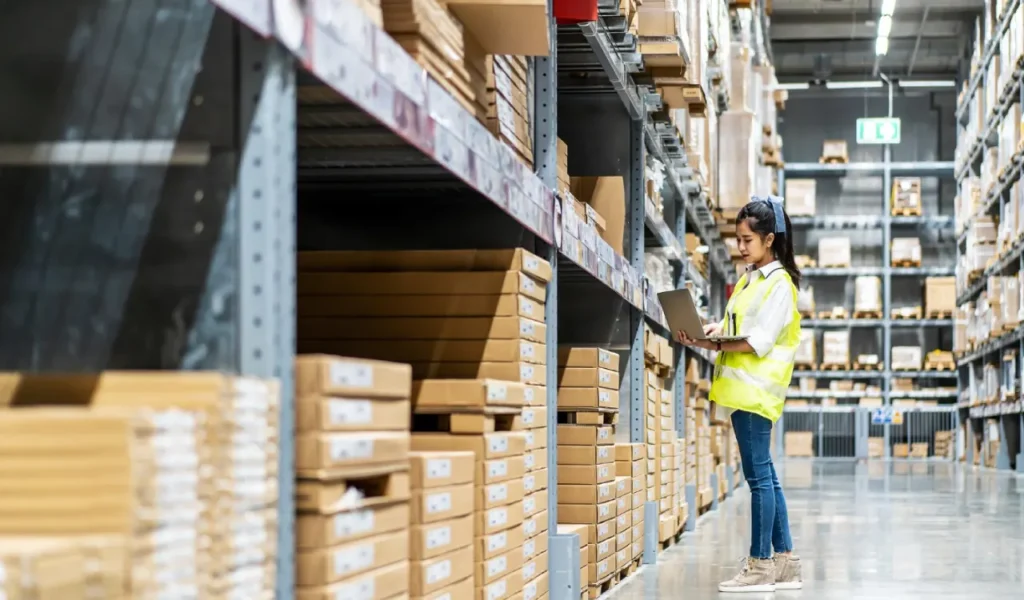Navigating Supply Chain

Introduction
Navigating the supply chain now involves overcoming significant disruptions and demands, challenging even experienced managers. From the global impact of COVID-19 to the rapid rise of electric vehicles, the landscape of logistics has shifted dramatically, demanding a new level of agility and resilience.
Supply Chains in the Crosshairs
A complex web of raw materials, transportation networks, and human labor. This is the essence of a supply chain, vital for our interconnected world. However, challenges have disrupted its smooth flow, demanding attention. Let’s take a look at the challenges.
Container Shortages and Port Congestion Becoming the New Norm
In the current state of the global supply chain, delays in transportation, stemming from container shortages and port congestion, have become the norm. Delays in transportation, a consequence of container shortages and port congestion, have become the norm. The Suez Canal blockage in 2021, for example, cost the global economy an estimated $10 billion per day, highlighting the fragility of interconnected trade routes.
Semiconductor Chip Shortage Woes: Industries Brace for $110 Billion Hit in 2022
Material shortages add another layer of complexity. The semiconductor chip shortage, fueled by pandemic-induced demand surges and geopolitical tensions, has crippled production across industries, from automobiles to electronics. A recent report by Alix Partners estimated that the chip shortage could cost the auto industry alone $110 billion in 2021.
Geopolitical Turmoil Adds to Supply Chain Woes
Geopolitical factors further complicate the picture. Trade wars and rising nationalism have created new barriers to the flow of goods. The ongoing conflict in Ukraine, for instance, has disrupted supply chains for raw materials like wheat and neon, impacting industries as diverse as food production and semiconductor manufacturing.
Electric Vehicles and Energy Storage: A Booming but Unpredictable Market
The rise of electric vehicles (EVs) and renewable energy sources presents both opportunities and challenges for supply chains. While the demand for EV batteries and charging infrastructure is skyrocketing, driven by government incentives and environmental concerns, this demand is also subjected to fluctuations.
Market trends, shifting government policies, and evolving consumer preferences can quickly alter the landscape. This volatility presents a unique challenge for supply chain managers. Investing heavily in EV battery production based on current forecasts could lead to overcapacity if demand stalls. Conversely, underestimating the pace of EV adoption could leave companies scrambling to catch up.
The Facts Don’t Lie
The magnitude of these challenges is reflected in stark figures. An Interos report estimates that global supply chain disruptions cost businesses a staggering USD 182 million in average annual cost in 2021 alone. The International Monetary Fund (IMF) warns that ongoing disruptions could reduce global GDP growth by as much as 1.1% in 2024.
Navigating the Future: A Call for Agility and Collaboration
The new realities of the supply chain demand a shift in mindset. Companies need to move from rigid, just-in-time models to more flexible, resilient approaches. This includes:
- Embrace Agility and Visibility
Real-time data, flexible planning, and collaborative partnerships are key to weathering unexpected difficulties. Investing in digital solutions like advanced analytics and visibility solutions can provide transparency and agility, allowing businesses to react 50% quickly to changing circumstances. - Rethink Geopolitical Reliance
Over-dependence on single source countries for critical materials creates vulnerability. Diversifying sourcing strategies, fostering domestic production, and building resilient regional supply chains can mitigate geopolitical risks. - Sustainability for the Long Haul
Integrating sustainability practices into supply chains is no longer just a nice-to-have, it’s a must-have. Responsible sourcing, resource efficiency, and end-of-life product management are crucial for long-term resilience and brand reputation. - Diversifying sourcing
Reducing reliance on single suppliers and exploring alternative sourcing options can help weather unexpected disruptions. Key metrics from companies suggest that it is estimated to reduce purchase order changes by about 18% while building up to 95% supplier engagement and rapport with different suppliers. - Building in redundancy
Buffering inventory can have an estimated reduction of about 50% while solving a credit block on orders and establishing backup manufacturing and distribution channels can provide essential breathing room during periods of crisis.
The challenges facing today’s supply chains are complex and multifaceted. Yet, amidst the turbulence lies an opportunity for innovation and growth. The future of supply chains is not about predictability, but about preparedness. By embracing agility, fostering collaboration, and prioritizing sustainability, businesses can navigate the uncertainties of the 21st century and ensure the smooth flow of the goods and services that fuel our world. The supply chain may be complex, but with the right tools and mindset, we can turn its disruptions into opportunities to build a more resilient and sustainable future.
Fill out the form below to connect with our supply chain experts & schedule a free demo!


